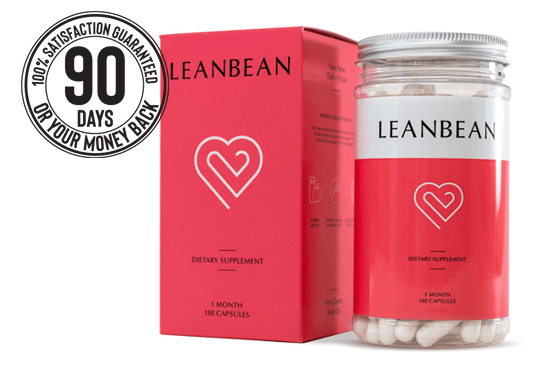When you’re on a tight budget, it can feel hard to fill your pantry with enough nutritious food. But eating healthy on a budget is simple with proper planning, a strategy, and some registered dietitian-approved tips.
According to the USDA, in 2021 Americans spent approximately 10.3 percent of their annual household income on food compared to 9.3 percent in previous years. However about half of this food is eaten outside of the home, which tends to be more costly and less nutritious.
In this article, we’ll review what healthy eating actually is and why it’s important, how to eat healthy on a budget, and a share list of affordable foods to add to your healthy grocery list.

Get a FREE 3 day meal plan to jumpstart your metabolism
Simple and delicious meals from our Registered Dietitian, plus top tips to make meal planning a breeze.
Get your meal plan
No thanks, continue shoppingThank you!
You have successfully joined our subscriber list.
What is Healthy Eating?
There are many opinions on the true definition of healthy eating. Is it low-carb, high-protein, vegetarian, vegan, or organic?

When it comes down to it, true healthy eating is about following basic nutrition principles – a whole food-based diet that contains a variety of protein, carbs, healthy fats, and plenty of fiber. Prioritizing whole foods found on the perimeter of the store versus processed food with a label will save you money and maximize your nutrition per dollar.
Focus on including a variety from each food group:
- Lean proteins – chicken, fish, eggs, tofu, beans, nuts, nut butters, and seeds
- Whole grain carbs – oats, whole wheat bread, quinoa, and whole wheat pasta
- Healthy fats – salmon, tuna, avocado, nuts, seeds, olive oil
- Fiber – Vegetables, fruits, high fiber cereals, whole grains
Choosing these types of whole foods provide maximum nutrition and fill you up, helping you to eat less and decrease your overall grocery bill.
What Are the Benefits of Eating Healthy?
The benefits of eating healthy are numerous. Here are some of the top benefits:
- Supports a healthy weight
- Improves your mood, focus, and motivation
- Reduces the risk of chronic diseases like diabetes, heart disease, and cancer
- Boosts immunity
- Builds muscle and supports bone health
- Aids in healthy digestion
- May help you live longer
The good news is that when you learn how to eat healthy on a budget, you’ll meet your health goals and have extra money to spare.
Eating Healthy on a Budget – 18 Effortless Ways
There are many ways to save money and still enjoy nutritious whole foods that support your goals.
1. Stay on top of your pantry
It’s easy to lose track of what you have stored in your pantry, especially those items that may have been pushed to the back for months. This is why staying on top of your pantry is one of the best ways to stick to your grocery budget.

Before you make your grocery list each week, go through what you already have. Scan your pantry, refrigerator, and freezer and see if anything is past its expiration and needs to be thrown away. Keep what is still good and plan balanced meals around it.
Even if you don’t have enough to make a complete meal, you may only need to buy one item to round it out versus buying an entire new meal. For example, maybe you have frozen shrimp and stir-fry veggies handy. Then all you have to buy is cauliflower rice to make it a meal.
2. Plan your meals
When it comes to eating healthy on a budget, planning your meals in advance is essential. It helps reduce the likelihood of a last minute takeout order that is expensive and not so great for you. Meal planning is also associated with improved diet quality, food variety, and a healthier body weight.
Pick one day each week to plan your meals ahead of time. Take a look at your weekly schedule for work and kids activities to help you plan. This will ensure you have the time to cook the food you buy and that it doesn’t end up getting thrown out.
3. Stick to your grocery list
Do you sometimes find yourself veering way off your grocery list, tempted by all the new products or treats you see as you navigate the grocery store aisles? This is all too easy to do, but it can lead you to spend way more than you intended.
Make a grocery list of the items you need and how much of them, and try your best to stick to it. Only go through the aisles that have the items you need so it’s easier to stick to your list. This will avoid any pricey surprises at checkout.
4. Don’t go shopping hungry
Going to the store hungry is a recipe for disaster, and will make it harder to stick to your healthy eating budget. According to research, you’re more likely to make poor decisions and impulse buys when you’re hungry.
You also may be more inclined to reach for the processed, high-calorie foods that you’re trying to limit. If you’re hungry before going to the store, have a filling snack such as a Greek yogurt with fruit and drink some water.
5. Shop seasonally
Produce that’s in season is generally less expensive than off-season items. Seasonal produce is also usually at its peak for both nutritional content and flavor.

If you buy too much, you can always freeze the rest or include it in future meals.
6. Go local
Finding local meats, eggs, and produce can help improve your nutritional intake and save you money. Local foods are often less costly, and are also more fresh and tasty because they aren’t traveling for miles to get to you.
Look for items that are locally sourced or visit your neighborhood farmer’s market for healthy food deals.
7. Don’t fear store brands
You can save hundreds on your grocery bill from buying store brands. The store brand versions often contains the same ingredients and level of quality as premium brands, but with less fancy packaging.
You can choose the store brand version of many nutritious items such as bread, cereals, milk, yogurt, and frozen produce without sacrificing quality.
8. Buy in bulk
Buying in bulk can save you boatloads of money, and can reduce trips to the grocery store. This also means less time spent and gas used to go to the store every week. Time is money!

Many staple items are great to buy in bulk such as grains, oats, beans, lentils, nuts, and dried fruit. These foods have a longer shelf life, especially if you keep them in airtight containers. They also are versatile and can be used in a variety of meals.
9. Look for sales
When you’re planning your meals for the week, take a few minutes to look at the store circulars to see what’s on sale. Build your meals around those items to enjoy nutritious meals without blowing your budget.
10. Become a coupon queen
It’s worth spending a few extra minutes to scan grocery store and brand-specific coupons. Check your weekly circulars or coupon websites such as coupons.com to find deals on your favorite products.
Just make sure to coupon wisely. For example, only purchase products you would be buying already, as it can be tempting to buy more items just because they’re at a lower cost. Some couponed items also tend to be for less nutritious foods, so make sure they fit within your healthy eating plan.
11. Cook more at home
Cooking at home can be half the price of dining out, and home-cooked meals are also more nutritious. In fact, studies have shown those who eat more meals at home have an improved diet quality and a healthier body weight.

Even if your meal planning is still a work in progress, just the mere act of cooking more at home will immediately improve your diet and save you money.
12. Buy more whole foods
Whole foods are not only more satisfying and nutritious, but they also are less expensive per serving than processed foods. Shop the perimeter of the store and limit the purchase of processed food items like sugary cereals, instant oatmeal, and ready-made sides.
Instead, build your meals around lean proteins without a label such as chicken breast, fish, ground turkey, eggs, dried beans and lentils, and produce that is on sale. Look for whole grains like brown rice and steel-cut oats in large packages rather than their instant, single-serving processed versions.
13. Try more plant-based meals
You don’t have to become a vegetarian, but going meatless a few days a week can save you money. Meat can be expensive, and substituting with plant protein sources is an easy way to reduce your grocery spending.

Eating more plant-based meals supports overall wellness and a healthy body weight. One reason for this is that plants are high in fiber, which is good for your heart and helps curb hunger.
Start by replacing 1-2 meals per week with plant-based items such as beans, lentils, eggs, or canned fish.
14. Snag frozen fruits & vegetables
It’s great to grab fresh produce as often as possible, but it can be expensive if it’s not in season. You can stretch your food dollar and still reap all the nutritional benefits of your produce by purchasing frozen items.
Frozen fruits and vegetables are just as nutritious, as they are flash-frozen at peak ripeness. They are less expensive than fresh, are available all year, and are sold in bulk. Add them to smoothies, stir-fries, or as a topping for oatmeal or yogurt.
15. Start a garden
Growing your own produce or joining a community garden can also save you money. Seeds are much cheaper to buy than the final product, and you will have a sense of pride that you created delicious food yourself.

Food grown from your own garden also tastes better and is more nutritious, making it easier to stick to your healthy eating goals.
16. Eat less
If your portions are too large, you will plow through your grocery items more quickly and end up spending more money. Reducing your portions automatically saves you money.
The easiest way to eat less is by eating more protein and fiber-containing foods like chicken, turkey, eggs, tofu, beans, lentils, fruits, and vegetables. These foods are filling in smaller portions, as both fiber and protein slow down digestion.
In fact, research has shown that those who consume more fiber tend to have a lower body weight and eat less. A specific type of soluble fiber called glucomannan has been shown to improve satiety. It works by forming a gel in your stomach, making you feel full.
In supplement form, studies show glucommanan may reduce food intake and support weight loss. Leanbean contains glucommanan in clinically studied doses shown to reduce food intake.
17. Drink more water
Water is essential for many reasons – but drinking more of it can also lower your grocery bill. This is because water fills your belly and makes you full. Studies show drinking a glass of water before meals reduces food intake during that meal.

Water also is free and drinking more of it replaces other costly, high-calorie beverages like soda and juice.
18. Embrace leftovers
Don’t fear leftovers! Prepping meals for several days saves you time in having to cook every day and helps prevent food waste. Leftovers can be repurposed in a different way to mix things up, such as adding them to your lunch, soups, stir-fries, salads, and tacos.
You can also enjoy healthy foods that are affordable year-round such as chicken thighs, canned fish, legumes, peanut butter, cottage cheese, bananas, apples, steel-cut oats, brown rice, frozen or canned vegetables.
How to Eat Healthy on a Budget – It Is Possible
It is entirely possible to eat well on a budget with a little organization and planning. Doing this can help you meet your health goals and also save tons of money in the process.
Cook more at home, drink plenty of water, and choose simple and economical foods packed with satiating protein and fiber.
Taking a quality supplement like Leanbean can also help reduce your food costs by helping you to eat less. It contains the filling fiber glucommanan in clinically relevant doses to reduce your food intake more effortlessly.
Disclaimer: The information on the Leanbean blog does not constitute medical advice and should not be used as such. If you would like to learn more about your dietary requirements and related aspects of your health, speak with a registered medical professional.











